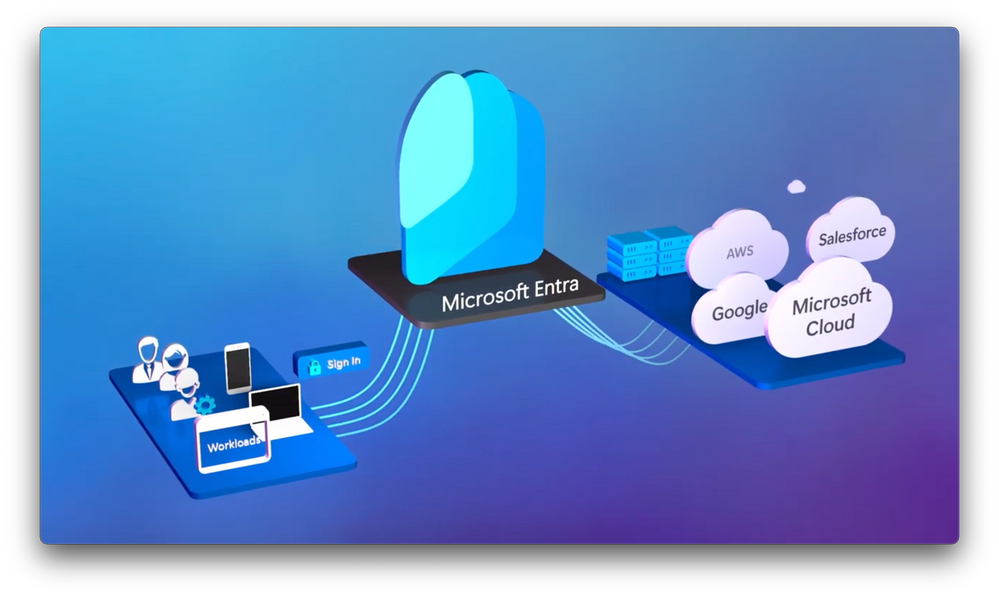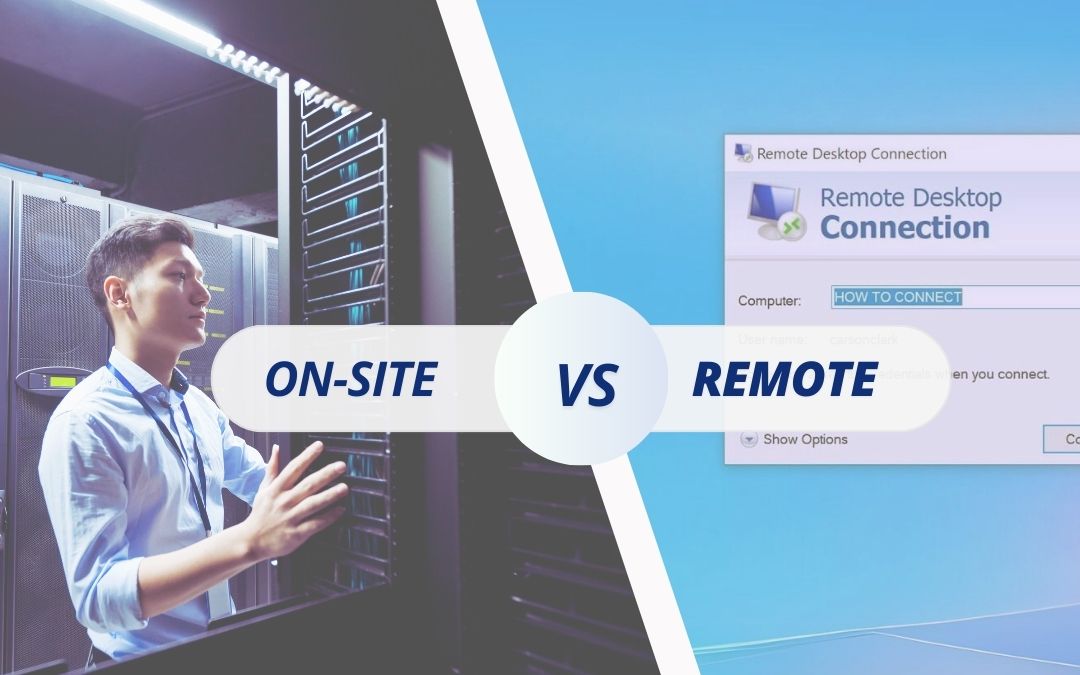
Today’s blog is all about Microsoft Azure Active Directory. As an IT expert with more than 20 years’ of experience in IT support services. It’s my job to keep up to date with the latest technology so you don’t have to. I love solving your IT problems as well as sharing my in-depth knowledge, and this blog allows me to do both. We’ll explore everything there is to know about Active Directory, what it is, why it’s so useful, and how it can benefit you.
Okay, let’s get started!
What Is Microsoft Azure Active Directory?
As businesses grow, they often find themselves in need of a better way to manage their user accounts and access rights. Without an efficient system for controlling who has access to what, it can be difficult to ensure security and accountability within the company. This is where Azure Active Directory comes in.
Azure Active Directory (Azure AD) is a Microsoft-developed directory service that provides a centralised database of:
- users,
- computers,
- applications,
- and other network resources.
This allows IT administrators to easily manage permissions across the organisation. By using Azure AD, businesses can create clear divisions between roles while still allowing secure access control over sensitive data. Additionally, Active Directory helps automate many administrative tasks such as password resets or account provisioning. This makes it easier for IT staff to focus on more strategic initiatives. All these benefits make having an Active Directory a must-have asset for any business looking to streamline its operations and maximise efficiency while keeping its data safe from unauthorised access.
How Azure Active Directory became such a powerful tool?
Azure Active Directory has become increasingly useful for businesses as it offers a comprehensive suite of security solutions that can be tailored to meet the needs of any organisation. The Azure AD platform was initially released in 2015, and since then has continued to evolve, providing businesses with an easy-to-use and flexible solution that can help them ensure their data is kept secure. At its core, Active Directory leverages identity management capabilities in order to effectively manage access to applications and services. This includes features such as single sign-on (SSO), allowing users to log into multiple applications without having to remember multiple passwords, as well as multi-factor authentication (MFA), which adds an additional layer of security when logging into accounts. Additionally, Active Directory can integrate with other Microsoft services such as Office 365 and Dynamics 365 for added convenience.
Who can do what in your network?
Azure Active Directory can help businesses keep track of who is allowed to access different parts of their company resources. For example, a business may need to make sure only certain people are allowed to see customer information or financial records.
With Active Directory, they can give specific people permission to access the data they need and stop others from having access. This makes it easier for businesses to protect their data and make sure that only the right people can see it.
Using Active Directory to manage users and their access rights provides businesses with a secure, reliable and cost-effective way to manage their network. It can help businesses protect their data from unauthorised access while still allowing them to efficiently manage the permissions given to users across the organisation.
Active Directory and Cloud-based Solutions
As more businesses move to cloud-based solutions, having an active directory is becoming increasingly important. With Azure Active Directory, businesses can be assured that their data is safe and secure while IT operations remain efficient. This makes it an ideal solution for any business looking to streamline its operations and maximize efficiency while keeping its data safe. Without Active Directory, IT admins have to face many individual users with a large number of computers, laptops, and mobile devices.
Each can have different permissions and configurations. If the admin is only responsible for just a few devices this still can be challenging as we have to be able to keep configuration consistent and secure throughout months or years. This becomes even more pressing if the company is considering any certifications such as Cyber Essential, ISO 27001 or SOC2.
As you can see lack of tools such as Active Directory can be a massive drain on human resources and an open invitation for trouble. This will lead to a lack of compliance with mismatched permissions that can lead to a breach. For more on IT compliance, be sure to check out the help we can offer here.
Simplification of user password management
Single Sign-On helps make it easier to manage user passwords. It means that you only need one password instead of many different passwords for each account. This makes it much simpler and safer to remember all your passwords. With Azure Active Directory, users only need to remember one password for all their accounts. While IT admins can easily reset passwords when needed. This also makes it much simpler to comply with security standards and guidelines as the admin has complete control over who is given access to what resources. You can read more on cyber security best practices in one of my previous blogs on the subject: Cyber Security Tips.
Integration of on-premises applications with cloud-based services
One of the key advantages of using Azure Active Directory is that it allows you to integrate your existing on-premises applications with cloud-based services such as Office 365. This helps create a seamless experience between both platforms and simplifies access management across different locations. It also means that IT admins can maintain control over various permissions. This can happen even if they are connecting multiple services from different providers. Moreover, they no longer have to manage each service separately.
This helps reduce the risk of unauthorised access and ensures that your data is secure and compliant.
Integrating with other systems
Integrating Active Directory with things like Office 365 or SharePoint can help you get more work done. When everything is connected, it’s faster and easier to find what you need. It also means that you don’t have to remember different passwords for each account. Instead, one password works for all. Rather than spending time finding the right credentials, your team will be able to use Active Directory in a productive way.
From experience, I know that many users, especially those who are less tech savvy, struggle with multiple logins for different platforms. Especially if each requires different complexity of the password. This frequently leads to situations where users will try to use a variation of the same password across many cloud platforms.
Steps needed to set up Azure Active Directory
First, outlining the steps to set up an effective Active Directory infrastructure begins with establishing an organisational structure. This will involve creating a hierarchy of roles and assigning respective permissions. Next, it’s important to develop policies for identity management, which includes setting up user privileges and defining access control policies. Following this, users must be added to the system and assigned the correct permissions based on their role in the organisation. Additionally, it is vital to configure security settings such as multi-factor authentication, single sign-on (SSO), and password complexity requirements.
Once the initial setup is complete, there are also ongoing tasks that need to be addressed in order to maintain a secure environment. These include regular monitoring activity logs for unauthorised access attempts. Also, implementing security patches to keep systems updated against any potential threats or vulnerabilities. Finally, it’s important to ensure that all users have appropriate training in Active Directory (and other key topics). This way, they understand how their actions affect the level of security within the organisation.
Conclusion
So, just to recap. This blog post has covered everything you need to know about Microsoft Azure Active Directory – what it is, why it’s powerful, and how to use it. We’ve also discussed the steps necessary to set up and maintain an effective Active Directory infrastructure.
These key steps include:
- establishing an organisational structure with roles and permissions
- developing policies for identity management
- adding users and assigning rights,
- configuring security settings such as multi-factor authentication or single sign-on (SSO),
- and regularly monitoring activity logs.
Additionally, it is important to provide training to users of an Active Directory in order to ensure they understand how their actions affect the security within the organisation.
For further reading on this topic, interested parties can refer to Microsoft’s official documentation on setting up Azure Active Directory: https://docs.microsoft.com/en-us/azure/active-directory/fundamentals/active-directory-whatis.
Additional resources include tutorials from Microsoft Learn (https://docs.microsoft.com/en-us/learn/azure/) and IT Pro Documentation (https://docs.microsoft.com/en-us/itpro).
Finally, TechNet provides a comprehensive library of articles regarding different aspects of Security in Azure Active Directory (https://social.technet.microsoft.com/wiki/contents/articles/34846.security-in-azure-active-directory.aspx).
Remember, if you ever have extra questions about anything I cover in my blogs, whether it’s Microsoft Azure Active Directory related or another topic, you can always reach out and contact me at [email protected]. I’d love to hear from you!
Final Words
Well, there you have it – everything you need to know about using Active Directory. That’s a wrap on another in-depth IT blog from yours truly. As ever, I hope you found it informative, engaging, and useful. I’ve spent a quarter of a century working in IT, building up the knowledge and expertise to help YOU with your tech problems and make your digital life easier. As well as sharing what I have learned for free through this weekly blog. I have also assembled a friendly team of experts who specialise in IT support in London, nationally, and internationally.
If you need a helping hand, simply message [email protected] or call us on 0800 389 6798. Our IT support services for businesses include everything from cyber security, cloud computing, and IT compliance to IT infrastructure support and more. We love working with our IT support clients and using our IT knowledge and experience to make their lives easier. We take care of the tech stuff so you can focus on what you do best. You can contact us by clicking here.
Sign up below to join the Operum newsletter



